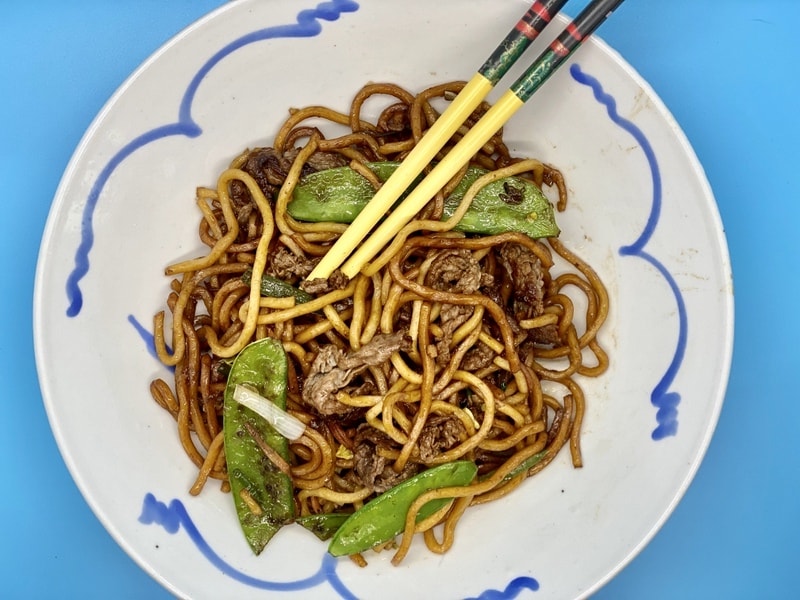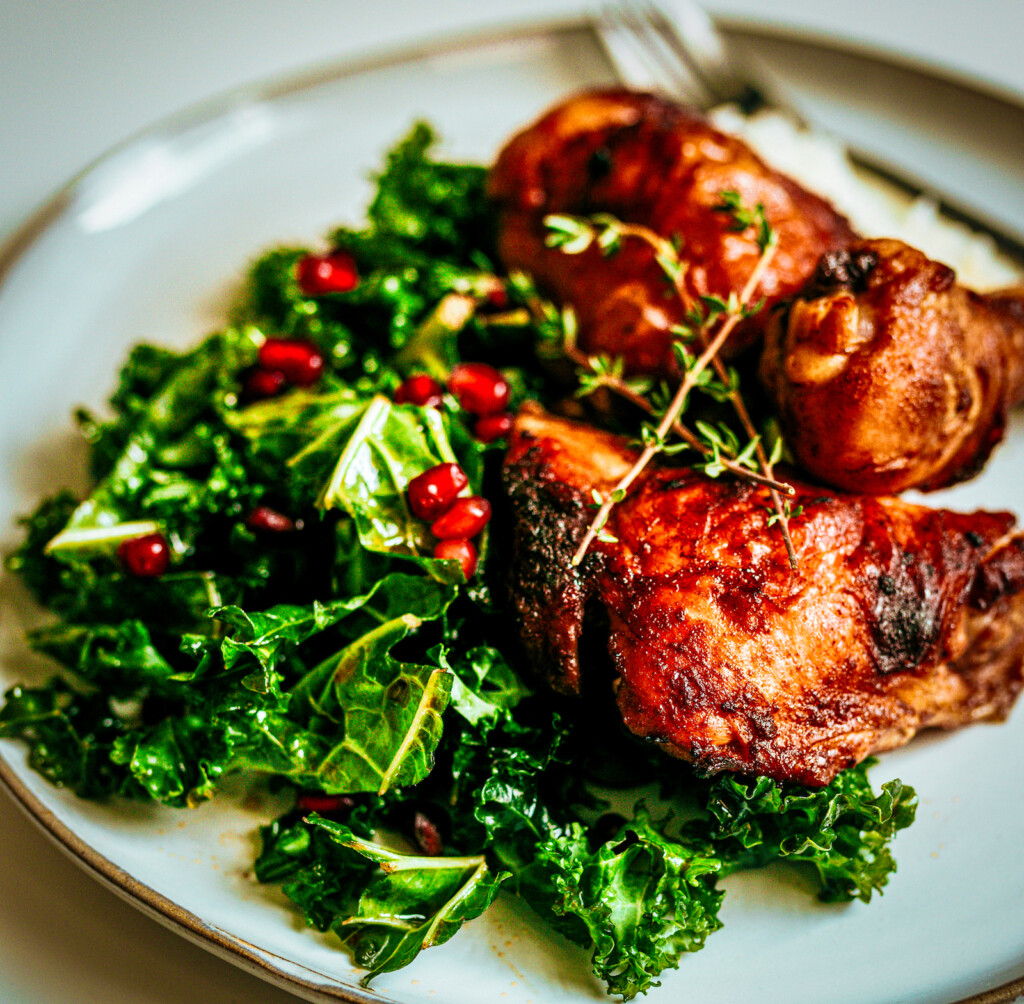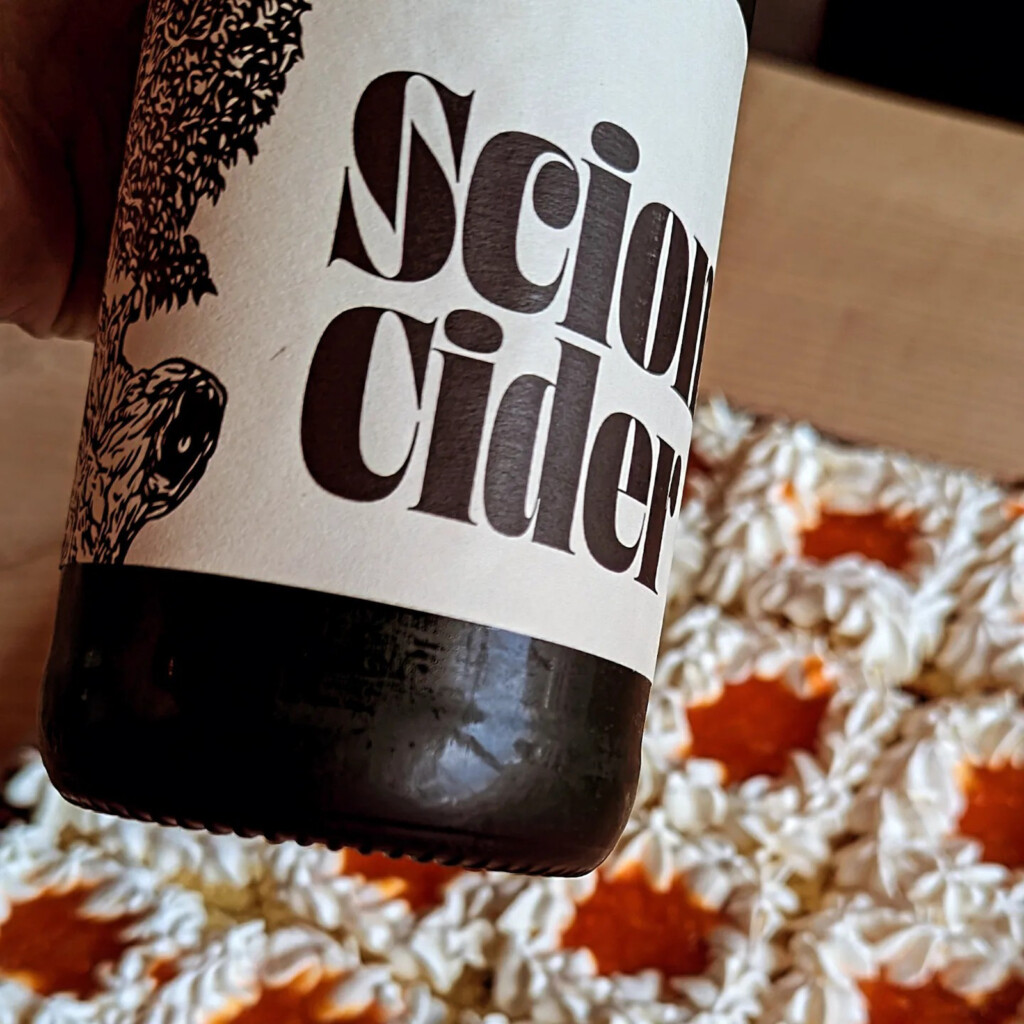
Chinese dishes like lo mein are pretty easy to make at home. The secret is organization. Be sure to have all of the ingredients prepped and ready to rock before you heat your wok. That’s because the actual cooking time for stir-fry dishes like lo mein is very rapid. This recipe is a modification of a beef lo mein recipe on the Woks of Life website.
Ingredients:
For the beef and marinade:
- 12 ounces flank steak
- 1 teaspoon cornstarch
- 1 teaspoon soy sauce
- 1 teaspoon vegetable oil
- 1/4 teaspoon baking soda
For the sauce:
- 1 tablespoon light soy sauce
- 1 tablespoon oyster sauce
- 2 teaspoons dark soy sauce
- 1/2 teaspoon sesame oil
- 1/2 teaspoon salt (or to taste)
- 1/4 teaspoon sugar
- 1/4 teaspoon white pepper
To complete the dish:
- 1 pound fresh lo mein noodles (I recommend using cooked lo mein noodles, but you can also use fresh uncooked noodles of a similar thickness)
- 1 clove garlic (minced)
- 2 cups Napa cabbage (shredded)
- 2/3 cup snow peas
- 2 tablespoons vegetable oil (divided)
- 1 tablespoon Shaoxing wine
- 2 scallions (julienned, white and green parts separated)
Method:
- Slice the beef into thin strips against the grain. Place the sliced beef in a small bowl with baking soda, corn starch, soy sauce, and oil. This velveting step will make the beef tender and flavorful, with a glistening look. Set aside to marinate for 30 minutes.
- Prepare the lo mein sauce by combining the soy sauce, oyster sauce, dark soy sauce, sesame oil, salt, sugar, and ground white pepper in a small bowl.
- If using cooked lo mein noodles, rinse them under hot tap water to loosen them and drain thoroughly. If using uncooked noodles, cook them according to package instructions until they’re al dente, and drain thoroughly. Set aside. Prepare the garlic and all the vegetables to have them ready for cooking. Arrange them in the order you will add them to the wok.
- Place your wok over high heat until it’s smoking lightly. Add 1 tablespoon of vegetable oil to coat the wok, and add the beef so it’s all in one layer on the hot wok surface. Sear each side for about 30 seconds. Remove the beef from the wok and set aside.
- Add another tablespoon of oil, along with the garlic. Stir-fry for 30 seconds.
- Add the white parts of the scallions. Stir-fry for another 20 seconds, and then add the napa cabbage. Make sure your heat is at its highest now, and stir-fry everything together for another 30 seconds.
- Add the prepared noodles. They should be warm or at room temperature, and not stuck together! If they are, just rinse them in hot water to loosen them up.
- Add the Shaoxing wine around the perimeter of the wok, and toss the vegetables and noodles together using a scooping motion. After the noodles are warmed up (about 30 seconds to 1 minute), and your pre-mixed sauce.
- Continue stir-frying with a scooping motion until the sauce is evenly distributed, making sure to scrape the bottom of the wok to prevent the noodles from sticking. High heat and a well-seasoned wok should also prevent any sticking.
- Next, add the snow peas and beef (along with any juices that may have collected in the bowl). Continue stir-frying until the noodles are heated through and everything is thoroughly mixed.
- Toss in the green parts of the scallions, and taste the lo mein. Adjust the seasoning to your liking (feel free to add more salt, soy sauce, oyster sauce, sesame oil, or white pepper according to your own palate).
FOR MORE RESTAURANT REVIEWS GO HERE.
THIS CONTENT IS FROM UTAH BITES NEWSLETTER.
Subscribe to get the latest Utah Bites news and reviews
 Originally trained as an anthropologist, Ted Scheffler is a seasoned food, wine & travel writer based in Utah. He loves cooking, skiing, and spends an inordinate amount of time tending to his ever-growing herd of guitars and amplifiers.
Originally trained as an anthropologist, Ted Scheffler is a seasoned food, wine & travel writer based in Utah. He loves cooking, skiing, and spends an inordinate amount of time tending to his ever-growing herd of guitars and amplifiers.
SUPPORT OUR SPONSORS: click on their logos to visit their website
[envira-gallery slug=”food-logos”]





